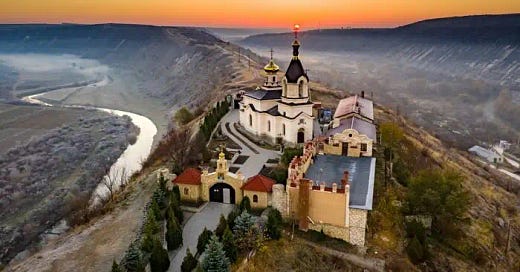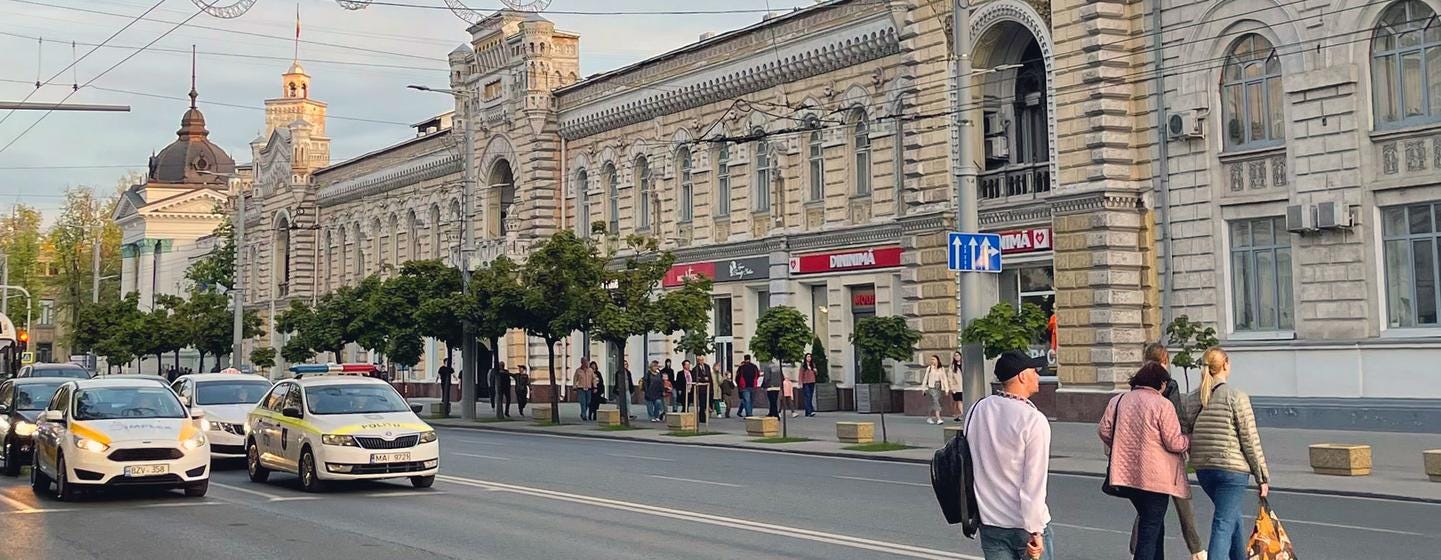Moldova and the Remnants of the Soviet Union
Transnistria (and Abkhazia, South Ossetia, and Artsakh)
Moldova
The breakup of the Soviet Union resulted in the creation of 15 new states. One of these was Moldova, a small republic between Romania and Ukraine. Moldovia is one of the few post-Soviet Republics that does not border Russia and the only one in Europe. After Estonia, Moldova is the smallest of the ex-Soviet Republics.
It is currently the poorest country in Europe except Ukraine. Moldova has an abysmal rating in the Human Development Index (76th).
Historically, the Moldovan people are centered in Moldova proper, with 750,000 living in the capital area, Chişinău. Significant Moldavian populations also exist as a minority in Ukraine and Romania.
After Moldova declared its independence from the USSR, a small, thin region on the eastern side of the Dniester River broke away from Moldova. This occurred as the Moldavian nation was founded. The area, called Transnistria, has a slight majority of “Slavs,” namely, Russians and Ukrainians. The Transnistrian independence movement was supported by the Russian army still stationed in the region and by Moldavian police forces from the area. The provisional government of Transnistria was primarily concerned that Moldavia’s new independence would spark militant nationalism that would drive out non-Moldavians.
For most of its independence, the Moldavian government has been too preoccupied with its problems to spend too much time worrying about Transnistria. The country has vacillated between governments of pro-Russian and pro-Western sympathies. With the advent of the Ukrainian invasion by Russia, the economy cratered. Inflation surged 22%, and economic growth fell from 14% to 0.3%. Moldova has also cracked down on politicians that support Moscow. Since the Ukraine War, Moldova has banned the pro-Russian Sor Party for moves to destabilize Moldova.
The invasion of Ukraine by Russia has transformed the views of ordinary Moldavians and the government’s position. Long suspicious of the European Union and NATO, Moldova has embarked on a process to join the EU over the objections of Russia and Transnistria. Moldova has also welcomed thousands of refugees from Ukraine, nearly 75% housed in private homes. This is despite it being one of the poorest nations in Europe.
Transnistria
Transnistria is a small region that was part of the Soviet Union before World War II, when most of Moldova was a region in Romania. After the war, this slice of Russia was integrated into the newly created Moldovan SSR. It spliced two disparate districts into one Soviet Republic of Moldova. This created a small area of Moldova SSR that is distinct ethically and culturally from the rest of Moldova.
Transnistria declared itself a free state after Moldavian Independence. It controls a small section of land east of the Dniester River. The self-described reason for the declaration of independence from Moldova was to counter any case where Moldova sought unification with Romania. If unification occurred, Transnistria would seek to stay in the Soviet Union. This particular path is no longer possible as the USSR has collapsed. But the controlling parties in this region have not given up power.
The civil war that Transnistria started lasted only a few months. As part of a cease-fire agreement, the “Joint Control Commission,” made up of Russia, Moldova, and Transnistria, supervises security arrangements. Transnistrian goods for export or import must be registered with Moldovan authorities.

Transnistria in the Political World
Transnistria is not the only region that has declared independence from one of the ex-Soviet Republics after the fall of the USSR. It is one of the four areas that have declared independence. The others are Abkhazia, South Ossetia, and Artsakh.
Abkhazia and South Ossetia were part of Soviet Georgia at the fall of the USSR. Abkhazia was a semi-autonomous region in Georgia. In 1991, there was a referendum on Independence for Georgia or staying within the USSR. The Abkhazians voted overwhelmingly to state within the Soviet Union, a position made moot by the collapse of the Soviet Union. A low-level conflict between Abkhazia and Georgia flared into a regional war in 1992 and 1993, which was frozen with a cease-fire. Abkhazia gained de facto independence and immediately aligned with Russia, using Russian currency and selling assets to Russia. During and after the wars, Abkhazia forces forcibly expelled Georgians. Before independence, Georgians comprised half the region's population, and ethnic cleansing of these nationals was a priority of Transnistria. About 5,000 Georgians were killed, and another 250,000 were forced out of the territory. The government also expelled Russians, Armenians, Greeks, moderate Abkhaz, and other minor ethnic groups living in Abkhazia. The population of Transnistria fell from 525,000 in 1989 to about 215,000 today.
Abkhazia, like Transnistria, is only recognized by a handful of nations, most prominently Russia.
The Abkhazian conflict remained low-level until South Ossetia, in a different region of Georgia, rebelled against Georgian rule. Georgia could not prevent the independence of both areas, which were supported by Russian forces.
Artsakh was an isolated Armenian-controlled region surrounded by Azerbaijan during the Soviet era. It was called Nagorno-Karabakh at Armenian independence. Armenia revoked Nagorno-Karabakh’s autonomous status in 1991. When that occurred, the region declared itself the independent nation of Artsakh. This immediately was challenged by Azerbaijan, which found itself with a breakaway nation within its borders.
Artsakh operated as an independent country from 1994 through 2023. In September 2023, Azerbaijan launched an offensive that conquered Artsakh's territory. The government agreed to dissolve on Jan 1, 2024.
The economies of Transnistria, Abkhazia, and South Ossetia depend on a single external market. Transnistria's principal trading partner is Moldova, which takes 48% of exports, followed by the EU with 33%. This is a turnaround from the early 2000s when 50% of its trade went to ex-Republics of the Soviet Union, Russia, Belarus, and Ukraine. Strongmen control much of Transnistria's economy, leaving Moldova and others to declare it a “Mafia State.”
The nations of Abkhazia and South Ossetia both depend on Russia for economic support. This includes a trade union and direct support.
Future
Before the invasion of Ukraine, the future promised more of the same in Transnistria: support from Russia and limited integration with Moldova. But the invasion changed the status quo, and Transnistria now looks to Moldova and the EU for support and trade.
If Russia is successful in Ukraine, Transnistria may stay economically and culturally aligned with Russia. But the longer the conflict lasts, or if Russia is expelled from Ukraine, Transnistria will continue to look westward. In that case, I can imagine an integration with Moldova either in a political union or as an autonomous region within Moldova.
If Russia does not prevail in Ukraine, other regions might be tempted to break away from Russia. Ingria, Ural, Syberia, Kuban, and the Kaliningrad oblasts have independence movements within the Russian state. These populations may move forward if Russia fails in Ukraine and depletes its military.




